Added 1 new A* page:Yesterday in talking about bow shocks around stars, I mentioned the star L.L. Orionis, in the Orion Nebula. The Orion Nebula (aka M42, or Messier 42), the closest region of intense star formation to Earth--1,350 light years distant--is bright enough to be seen by the naked eye from the Earth's surface; curiously though, it wasn't seen as a nebula by any stargazers until the 17th century, leading to speculation that its current luminosity may be due to a recent flare-up of young stars. Previously it was seen as a star, and was made the middle "star" in the belt of the constellation Orion.
Being the closest significant stellar nursery, the nebula has been the object of much study, and a rather well known Hubble photo. I posted a larger version of it some time ago on the forum, along with detailed photos of the "proplyds"--baby stars with protoplanetary discs: solar systems just starting to form--Hubble spotted within it. But I'm going to repost that because it's a nice one, and then a bunch of other photos, because it's such a pretty nebula.
Interestingly, its areas of green tint puzzled astronomers who observed it early in the 20th century, because that color didn't come from any known emission lines; but now we know that the color is due to what is called a forbidden transition in doubly ionized oxygen. A "forbidden" transition is really just a very unlikely electron transfer, with a very low quantum probability under normal conditions; it turns out that what we on Earth had considered "normal" doesn't necessarily apply in the near-vacuum of deep space. To quote the Wikipedia entry:
| Forbidden emission lines have only been observed in extremely low-density gases and plasmas, either in outer space or in the extreme upper atmosphere of the Earth. Even the hardest laboratory vacuum on Earth is still too dense for forbidden line emission to occur before atoms are collisionally de-excited. However, in space environments, densities may be only a few atoms per cubic centimetre, making atomic collisions unlikely. Under such conditions, once an atom or molecule has been excited for any reason into a meta-stable state, then it is almost certain to decay by emitting a forbidden-line photon. Since meta-stable states are rather common, forbidden transitions account for a significant percentage of the photons emitted by the ultra-low density gas in space. |
So doubly ionized oxygen won't give off a greenish glow on Earth, except maybe under the most exacting of laboratory conditions--but in space, particularly in the Orion Nebula, green is go! Some early astronomers, not being able to reproduce such conditions, thought the green tint might be a sign of a new element, which they speculatively named "nebulium"--but it is in fact just oxygen.
Okay, on with the photos. We start as I started to say with the famous Hubble view of the nebula, showing its 24-light-year extent:
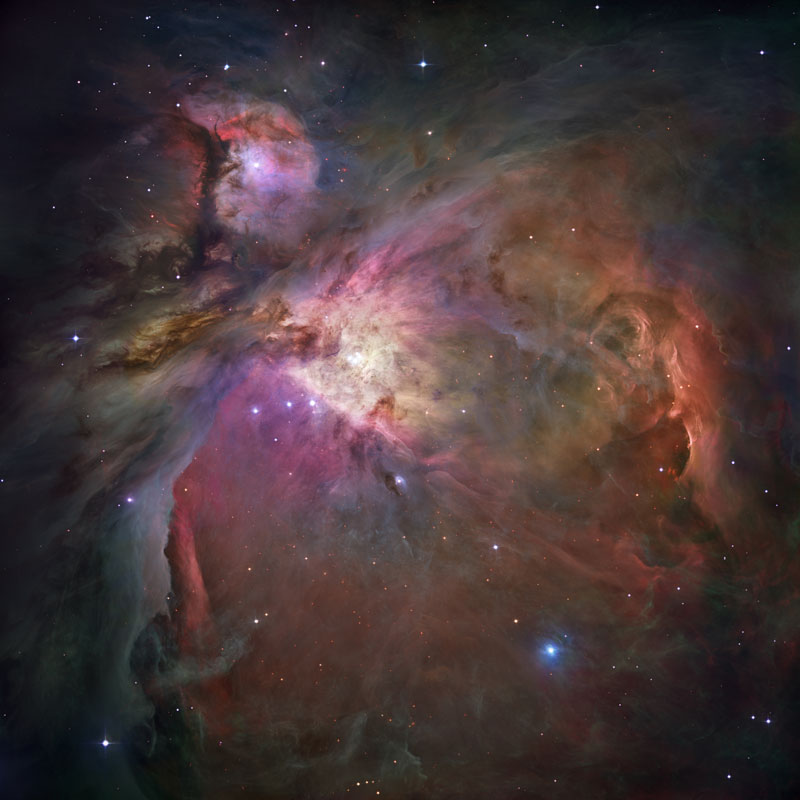
image by NASA/ESA/STSI (source)
L.L. Orionis (aka "LL Ori") and its large bow shock are barely visible there, just below center. Let's take a closer look; you can see L.L. Orionis and its bow in pink just up and left of center here:
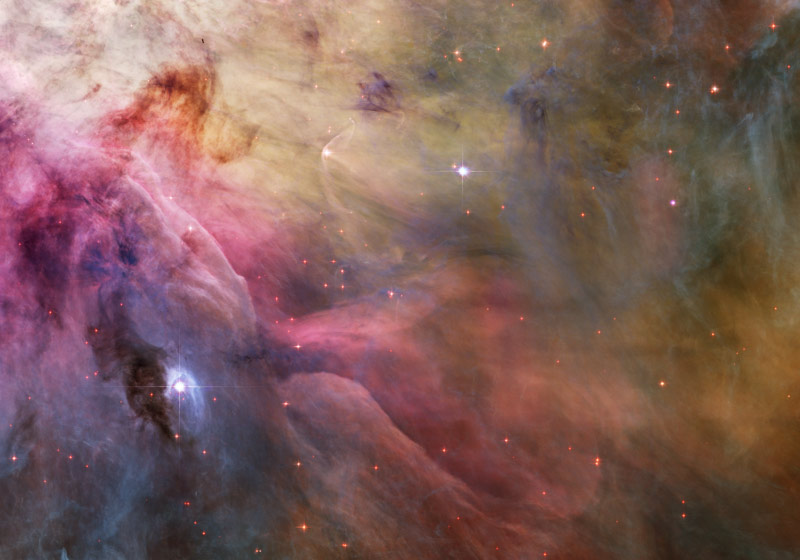
image by NASA/ESA/STSI (source)
So what's causing that bow shock around L.L. Orionis? A stream of gas coming from the center of the nebula, propelled by hot young stars. The biggest of them form the bright lights of the small Trapezium Cluster, which gets center stage in this photo (L.L. Orionis is in the lower right):
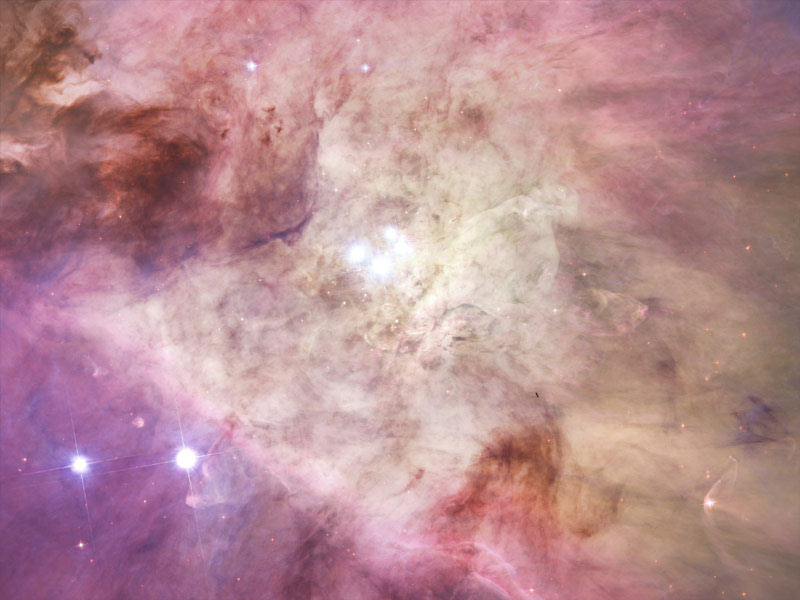
image by NASA/ESA/STSI (source)
The most massive of them is Theta-1 Orionis C, the lowermost of the bright white stars visible in the tight cluster at the center of that image. It has the highest surface temperature of any star visible to the naked eye: 45,500 K (compare to the Sun's 5778 K); this is slightly cheating, however, as close observation has shown that it is actually a binary of two stars that are very close together. Its ultraviolet emissions account for most of the glow of the entire nebula; its stellar wind is 100,000 times as strong as the Sun's, propelling gas outward at 1000 km/s (0.3% light speed! :o).
Here's a nifty comparison from Hubble showing the Trapezium and their nebular surroundings first in visible, then in infrared light: the infrared goes right through all those clouds of gas and dust, revealing loads of little baby brown dwarf stars hidden within!
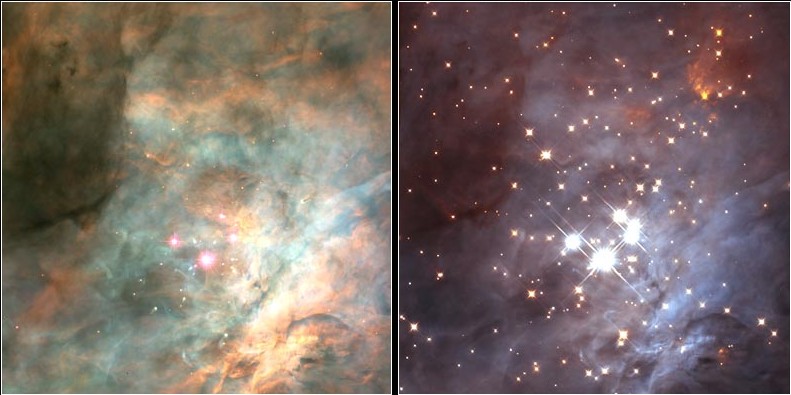
image by NASA/ESA (source)
Here's a neat false-color (the colors represent different types of ionized gas) image that gives a good idea of the nebula's bell shape, the cone of the bell being blown open by its "clapper," the Trapezium cluster, if you will:
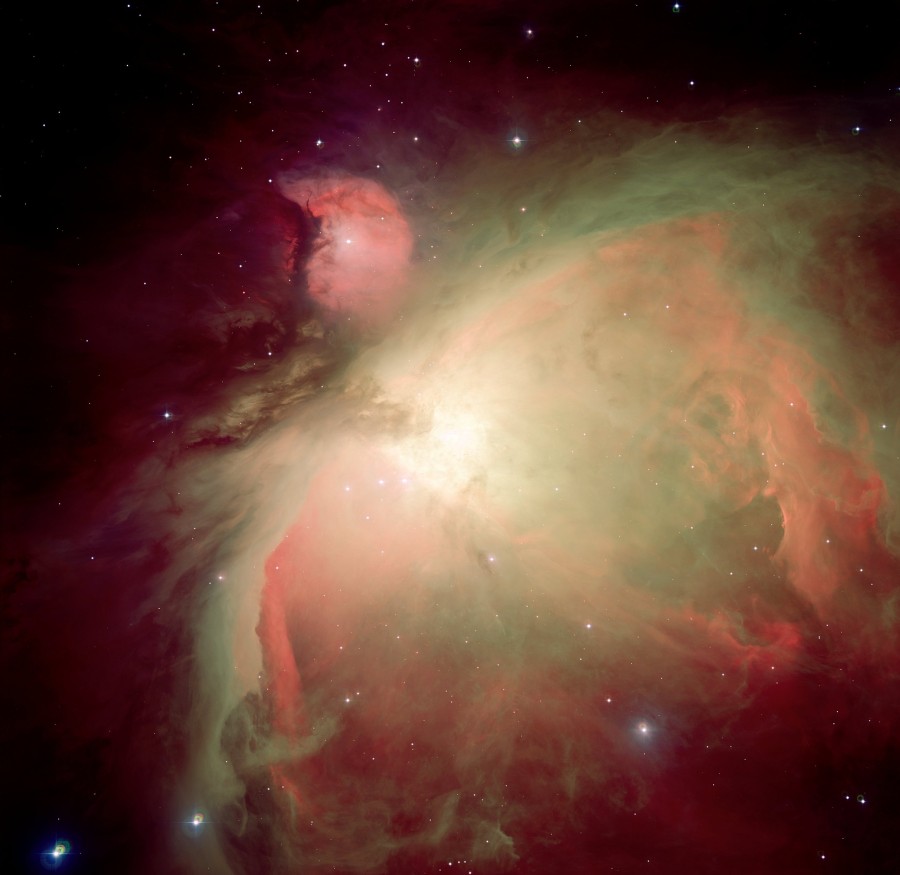
image by ESO (source)
Here's a nice false-color one of infrared light by NASA's Spitzer Space Telescope:
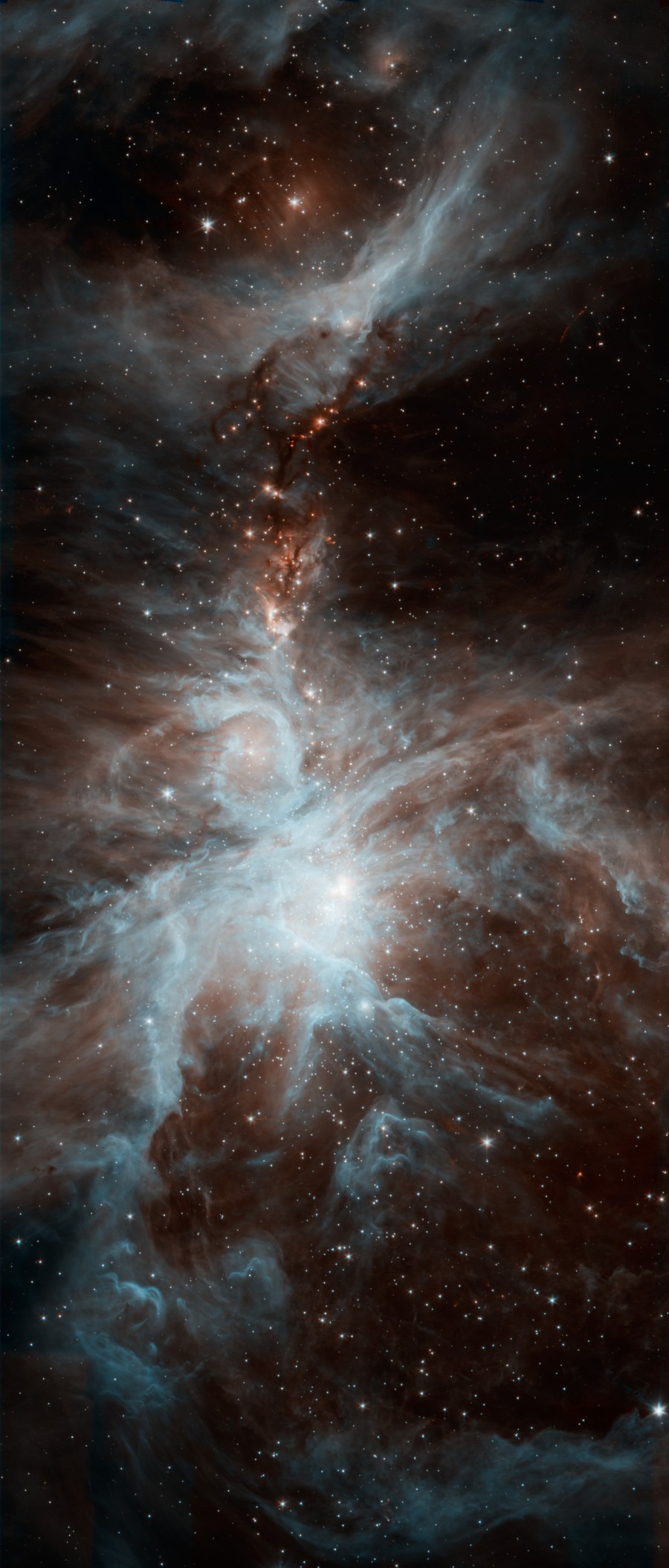
image by NASA (source)
Man I'm being high-bandwidth today! I hadn't realized it before, but the Spitzer telescope, launched in 2003, ran out of liquid helium coolant in 2009; without coolant, it can only use its two shortest wavelength infrared camera modules effectively--this is called it's "warm mission," and still capable of some great images, as the one above can attest!
That being said, here's another false-color infrared view of the nebula, this one from one of those high-altitude ESO observatories in Chile:
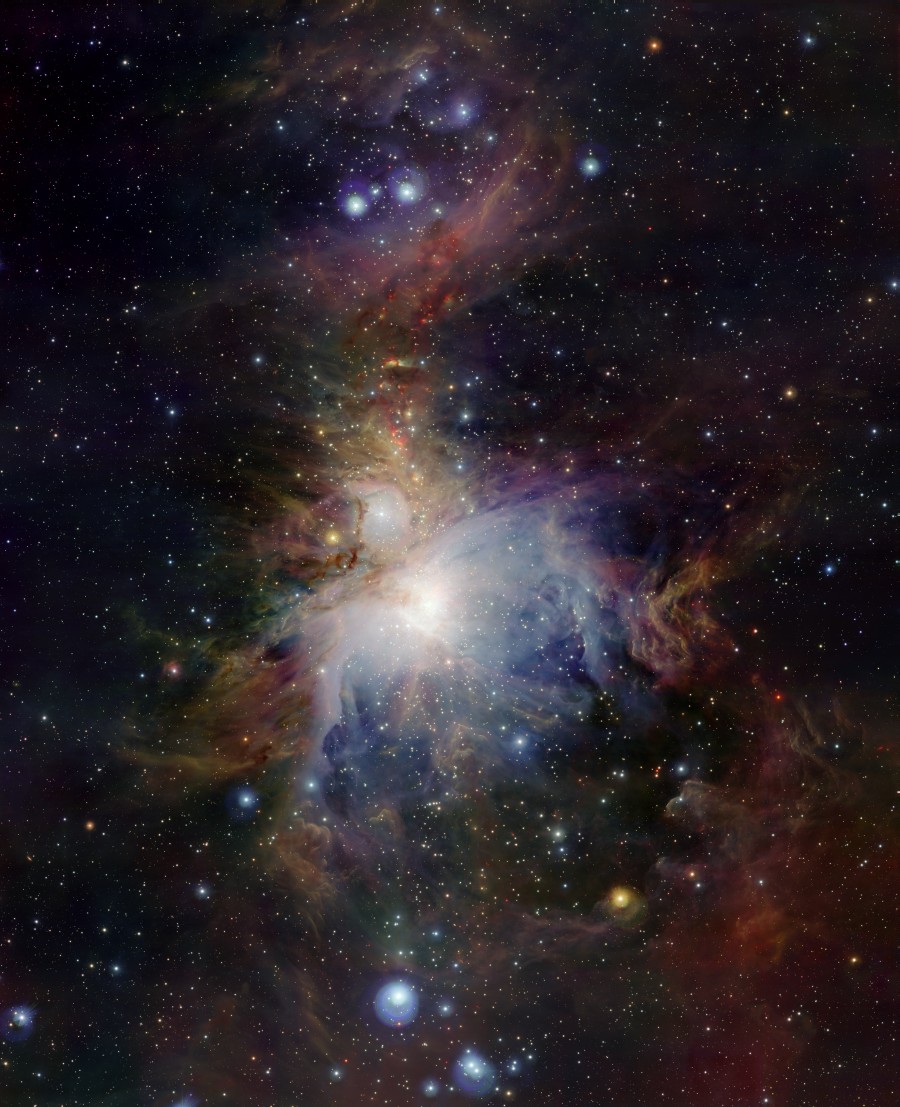
image by ESO/J. Emerson/VISTA (source)
And if you really want to be blown away, try the "source" link for that one--the original is over 12,000 pixels wide! And you can see loads and loads of bow shocks and eddies and things on the little baby stars inside the nebula, like so:
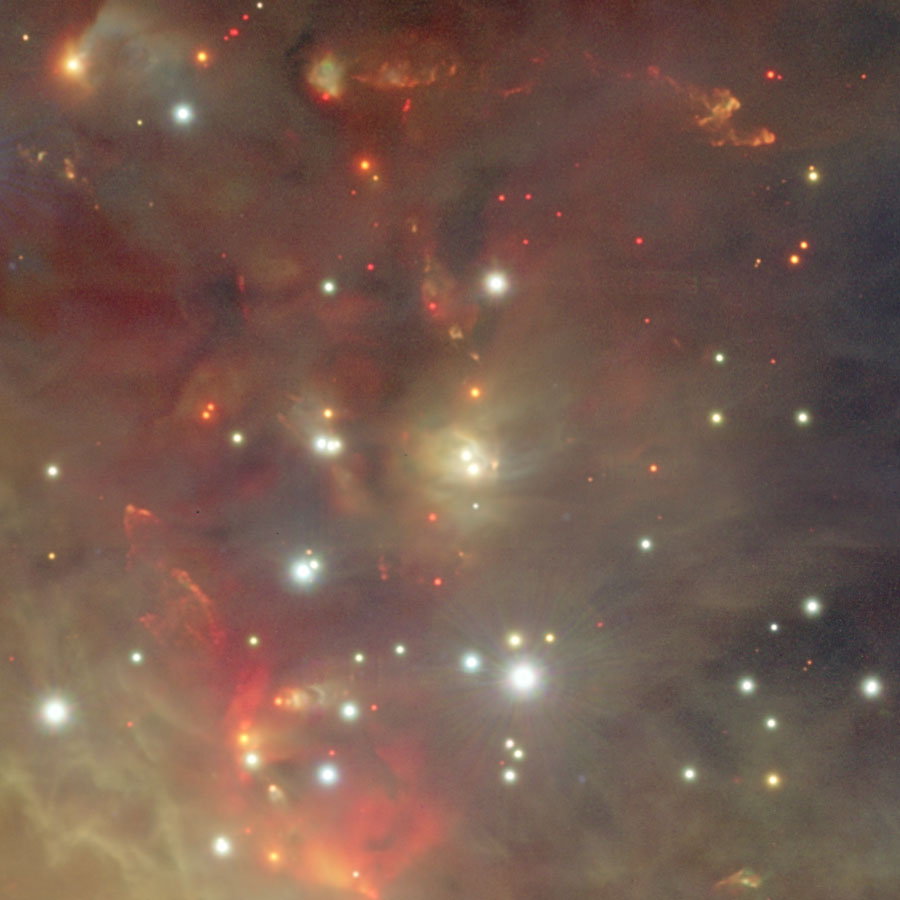
Awww. :)
|
